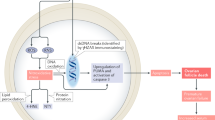Abstract
Purpose of Review
The precise impact that gravity, or the lack of gravity, plays in the key phases of mammalian reproduction remains a mystery. Humans and all other known living species have adapted to the effects of gravity on Earth. Only recently has the study of gravitational biology become truly possible. As humans spend increasingly longer periods of time in space, the effect of minimal gravity (microgravity) on mammalian reproduction must be addressed.
Recent Findings
This article examines the devices used to simulate microgravity on Earth. It also explores the evidence behind microgravity’s effects on immunomodulation, cell signaling pathways, and gene activation, as well as the impact of these changes on embryo development.
Summary
As humans look to the stars with plans for eventual colonization of space stations and other planets, understanding and overcoming the detrimental effects of microgravity on embryo development will be important in creating successful extraplanetary assisted reproductive technology (ART) programs. The necessity of this work becomes ever greater as our population approaches the carrying capacity of our planet. Even if we avoid planetary overpopulation, these studies can still provide valuable insight and improvements to ART therapies on Earth.

Similar content being viewed by others
References
Papers of particular interest, published recently, have been highlighted as: • Of importance
Erickson K. What is gravity really? 2016. Available from: http://spaceplace.nasa.gov/what-is-gravity/en/.
List RJ (ed). Smithsonian meteorological tables. 6th rev. ed. Washington, D.C.: Smithsonian Institution; 1951. p. 488–494.
Williams D, et al. Acclimation during space flight: effects on human physiology. CMAJ. 2009;180(13):1317–23.
Feger BJ, et al. Microgravity induces proteomics changes involved in endoplasmic reticulum stress and mitochondrial protection. Sci Rep. 2016;6:34091.
Economos AC, et al. Effects of simulated increased gravity on the rate of aging of rats: implications for the rate of living theory of aging. Arch Gerontol Geriatr. 1982;1(4):349–63.
• Wang Y, et al. A major effect of simulated microgravity on several stages of preimplantation mouse development is lethality associated with elevated phosphorylated SAPK/JNK. Reprod Sci. 2009;16(10):947–59. The alterations of the SAPK/JNK proteins described in this study provide a biologically plausible mechanism by which exposure to MGS negatively impacts embryo development.
Ronca AE. Studies toward birth and early mammalian development in space. Adv Space Res. 2003;32(8):1483–90.
• Wakayama S, et al. Detrimental effects of microgravity on mouse preimplantation development in vitro. PLoS One. 2009;4(8):e6753. This study provides evidence for how MGS can effect cellular pathways leading to a block in differentiation and therefore negatively impact embryo development.
• Kojima Y, et al. Effects of simulated microgravity on mammalian fertilization and preimplantation embryonic development in vitro. Fertil Steril. 2000;74(6):1142–7. This study shows a clear negative impact on the live birth rate resulting from embryos transferred after exposure to MGS.
Shinde V, et al. Simulated microgravity modulates differentiation processes of embryonic stem cells. Cell Physiol Biochem. 2016;38(4):1483–99.
• Pace N, Rahlmann DF, Smith AH, Pitts GC, Ushakov AS, Smirnova TA. Body composition data from the rat subjects of Cosmos 1129 experiment K-316. Berkeley: U. California, Environmental physiology laboratory; 1982. p. 63. (EPL-82-1; NASA CR-168678). This data comes from the NASA Technical Report from Cosmos 1129 mission which can be found at ntrs.nasa.gov .
Hoson T, et al. Evaluation of the three-dimensional clinostat as a simulator of weightlessness. Planta. 1997;203(Suppl):S187–97.
Robertson SA. Control of the immunological environment of the uterus. Rev Reprod. 2000;5(3):164–74.
Qureshi KM, et al. Low gravity rotational culture and the integration of immunomodulatory stem cells reduce human islet allo-reactivity. Clin Transpl. 2015;29(1):90–8.
Author information
Authors and Affiliations
Corresponding author
Ethics declarations
Conflict of Interest
Robert Rydze, Amy Schutt, William Gibbons, and James Nodler declare that they have no conflicts of interest.
Human and Animal Rights and Informed Consent
This article does not contain any studies with human or animal subjects performed by any of the authors.
Additional information
This article is part of the Topical Collection on Reproductive Endocrinology and Infertility (REI)
Rights and permissions
About this article
Cite this article
Rydze, R., Schutt, A., Gibbons, W. et al. Gravity and Embryo Development. Curr Obstet Gynecol Rep 6, 51–54 (2017). https://doi.org/10.1007/s13669-017-0193-3
Published:
Issue Date:
DOI: https://doi.org/10.1007/s13669-017-0193-3




